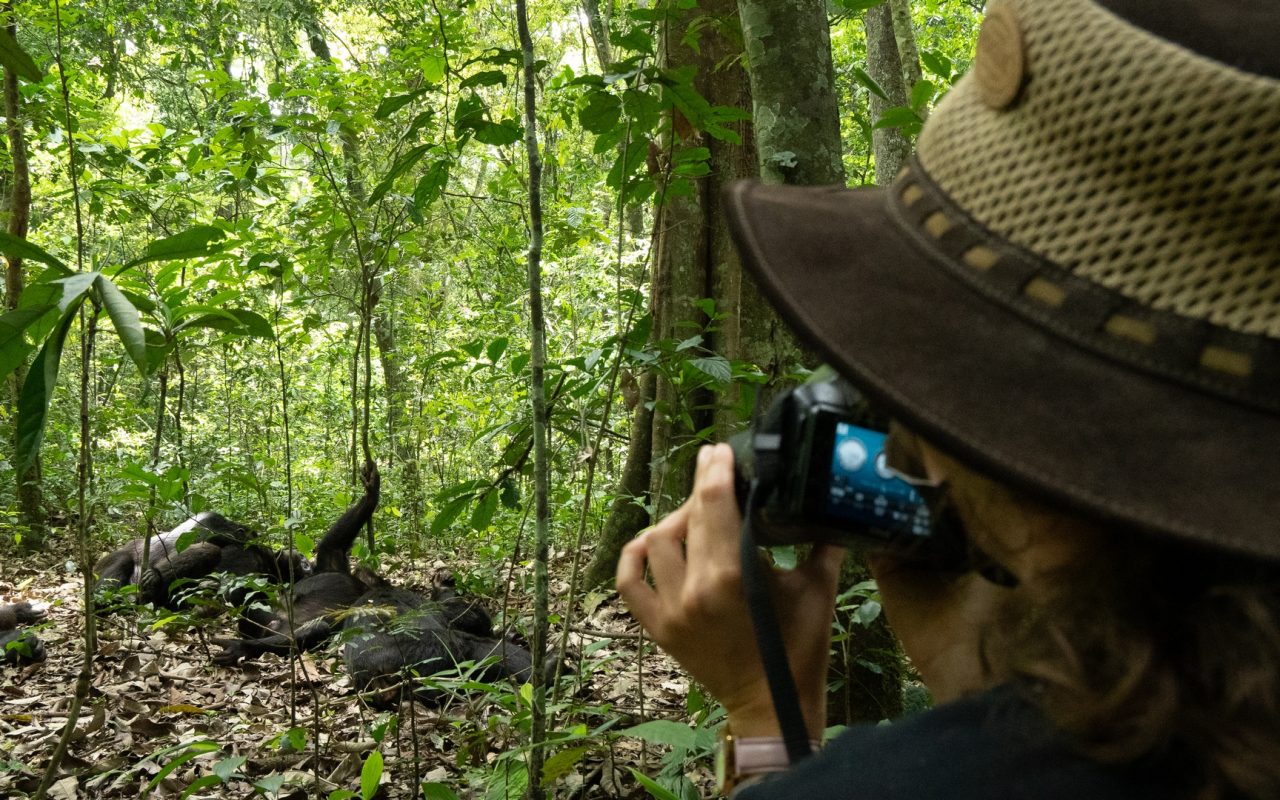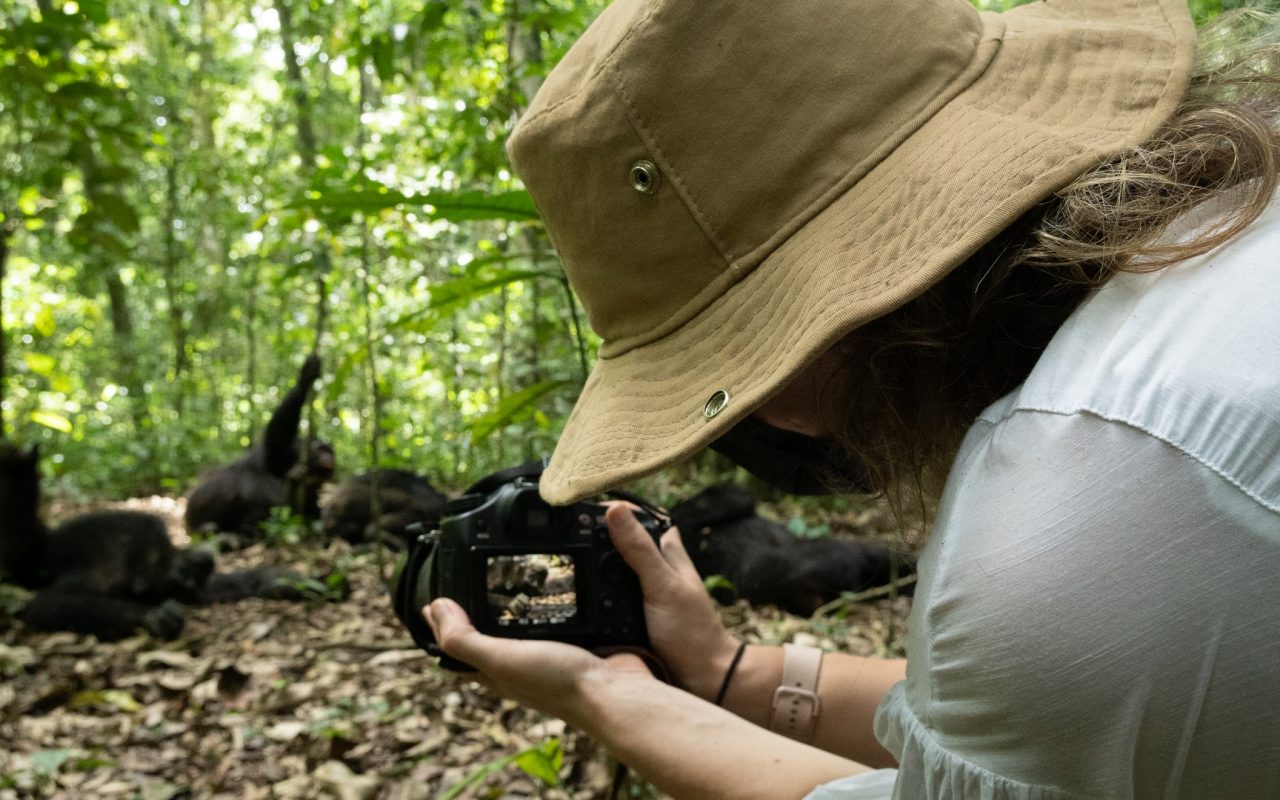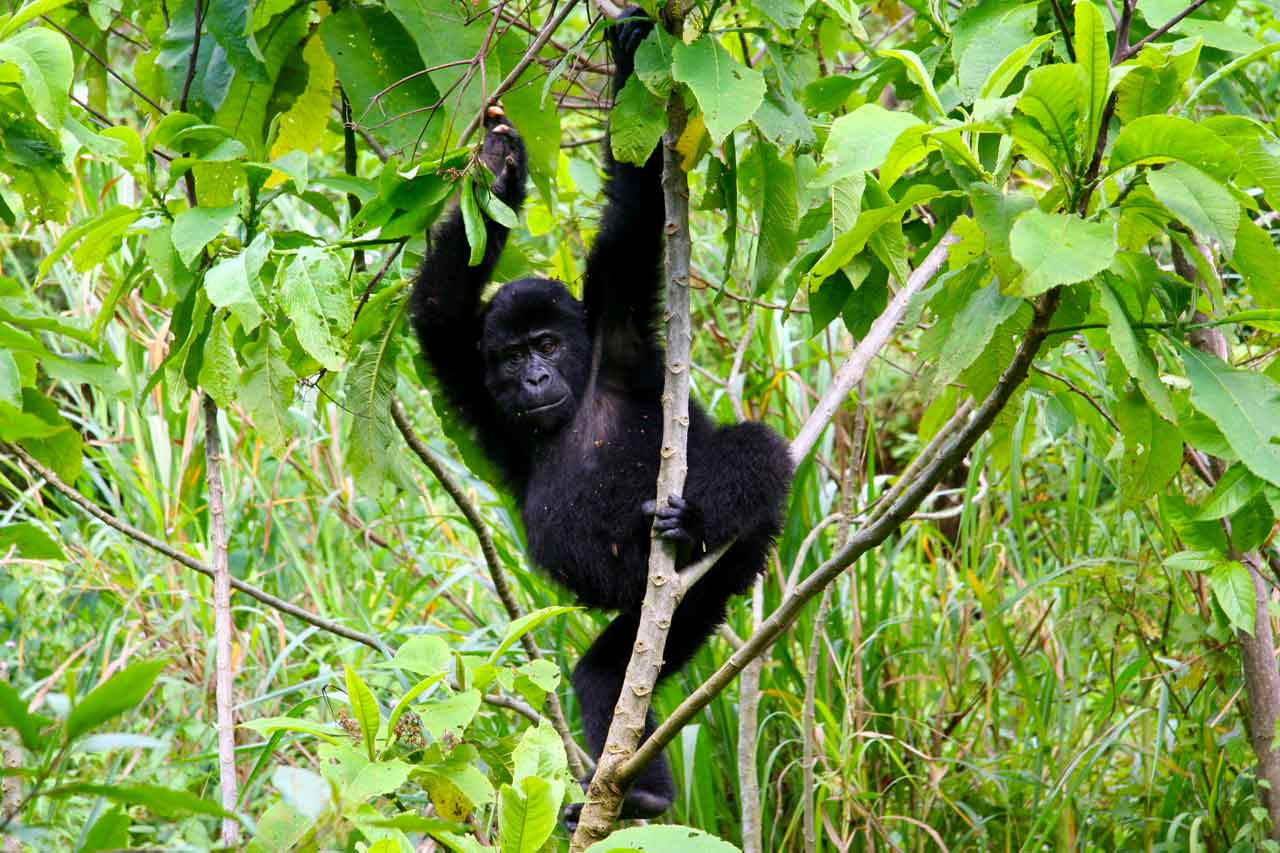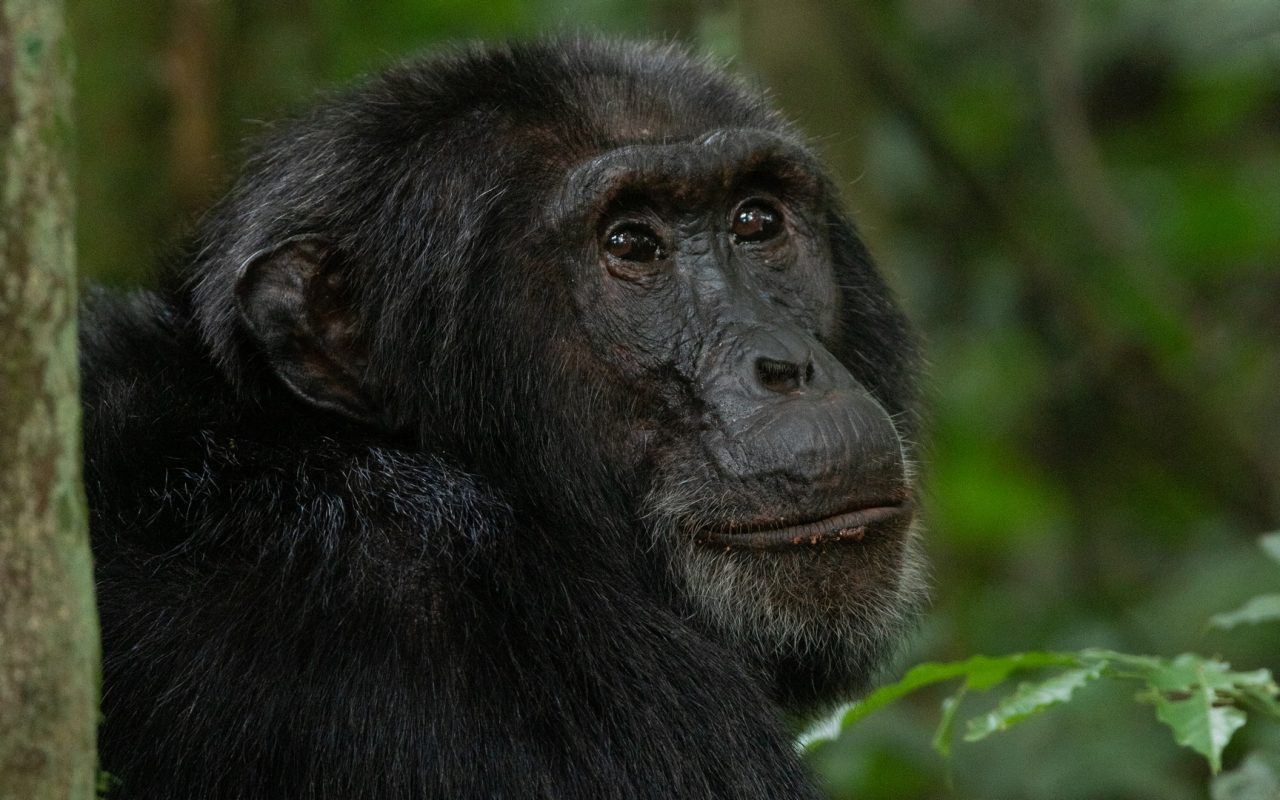10-Day Uganda Photographic Safari: A Deks Safaris & Tours Exclusive Experience
Embark on a 10-day Uganda photographic safari designed exclusively for passionate photographers seeking intimate wildlife encounters, breathtaking landscapes, and once-in-a-lifetime primate moments. Crafted by Deks Safaris & Tours, this safari immerses you in Uganda’s most iconic national parks, providing unparalleled access to chimpanzees, mountain gorillas, and big game in their natural habitats. From the roaring Murchison Falls to the misty mountains of Mgahinga Gorilla National Park, every moment is optimized for photographers who crave both adventure and visual storytelling.
This journey balances professional guidance with authentic experiences, combining expertly managed logistics, luxury lodges, and photo-focused activities to ensure safety, comfort, and creative freedom. Each day is designed to maximize photographic opportunities, whether it’s capturing a lion’s majestic stance under golden savannah light, a chimpanzee’s playful behavior in Kibale’s lush rainforest, or the tender gaze of a mountain gorilla in mist-shrouded montane forests. Alongside wildlife, the itinerary offers cultural interactions and local experiences, adding depth and context to every photograph.
Through chartered flights, smooth transfers, and dedicated guides, this safari provides seamless travel across Uganda’s diverse ecosystems. Photographers benefit from pre-trek briefings, personalized mentoring, and post-processing sessions, all aimed at elevating their craft. These itinerary positions your photography journey as both a creative and transformative African adventure.
Exploring Big Game and Dramatic Landscapes in Murchison Falls National Park
Murchison Falls National Park forms the perfect start to your Uganda photographic safari. Spanning vast savannahs, riverbanks, and woodland patches, the park offers a dramatic backdrop for capturing classic African wildlife. The mighty Victoria Nile funnels through a narrow gorge, creating roaring falls that plunge into shimmering pools below. This spectacle provides not only a stunning subject for landscape photography but also a dynamic environment for capturing hippos, crocodiles, and riverine birdlife.
During three nights in the park, photographers explore the golden-lit savannahs in search of lions, elephants, giraffes, and buffalo herds. Each game drive presents opportunities to experiment with framing, depth, and motion, whether photographing lions in repose under acacia trees or elephants crossing the sunlit plains. Evening river cruises below the falls allow intimate shots of aquatic wildlife while capturing reflections, mist, and wildlife interactions—a combination that creates storytelling images few other locations can match.
Murchison Falls’ expansive skies and diverse terrain enhance the visual drama of every photograph. Photographers can experiment with silhouette techniques against sunrise or sunset, aerial perspectives using drones (where permitted), and telephoto lenses for capturing predators at close range. This park not only refines technical skills but also sets the tone for the immersive primate photography to follow. With Deks Safaris & Tours’ guidance, every moment becomes a carefully curated photographic opportunity, maximizing both creativity and conservation awareness.
Photography Focus: Big game of Uganda including lions, elephants, hippos, giraffes, and a rich variety of birds in their natural habitats.
Immersive Uganda Chimpanzee Photographic Safari in Kibale Forest National Park
After exploring the savannahs and river landscapes, the safari transitions to the dense, biodiverse Kibale Forest. This rainforest is home to Uganda’s largest population of wild chimpanzees and over a dozen additional primate species. The Chimpanzee Photography Safari here allows extended, close-range access to chimpanzees during a full-day habituation experience, offering photographers unparalleled opportunities to capture natural behaviors.
Dense canopies create challenging yet rewarding lighting conditions. Photographers must adapt to dappled sunlight, moving subjects, and the interplay of shadows, which adds depth and authenticity to every image. Pre-trek briefings guide photographers on composition, focus techniques, and ethical approaches to wildlife photography, ensuring that each frame respects the chimpanzees’ natural environment. With expert guidance, photographers can capture candid moments: a mother grooming her young, playful interactions among juveniles, or the expressive eyes of an adult chimpanzee.
Kibale Forest also offers rich opportunities for bird and macro photography. The vibrant rainforest teems with colorful species, moss-covered trees, and unique insects. Each stop along the forest trail doubles as a chance to explore new perspectives, test lens capabilities, and document Uganda’s extraordinary biodiversity. The immersive experience culminates in evening post-processing sessions at the lodge, where photographers refine their shots with expert mentorship. This ensures that every memory transforms into professional-quality imagery, perfect for portfolios, exhibitions, or personal collections.
Photography Focus: Chimpanzees in their natural habitat, expressive behaviors, social interactions, and other primate species of Kibale Forest.

Africa Chimpanzee Tracking Safaris
Uganda Mountain Gorilla Photographic Safari in Mgahinga Gorilla National Park
Mgahinga Gorilla National Park is a crown jewel of Uganda’s primate destinations, offering photographers an exceptional opportunity for Gorilla Trekking Photo Safari experiences. Unlike denser forests, Mgahinga’s montane landscape features open, high-altitude forests that allow clear, unobstructed views of mountain gorillas. Morning mist drifting through volcanic peaks provides a natural, soft light that enhances every photograph, transforming each frame into a cinematic moment.
During two full days of guided gorilla trekking, photographers spend up to one hour with gorilla families, capturing intimate behaviors, social bonds, and playful interactions between silverbacks, females, and juveniles. The park’s relatively open environment allows for varied compositions, from close-up portraits highlighting expressive eyes to wide-angle shots situating gorillas within their stunning volcanic surroundings. Photographers can explore creative techniques such as shallow depth-of-field, motion capture of gorilla movement, and natural backlighting to emphasize the misty, ethereal quality of Mgahinga’s forests.
Beyond gorillas, Mgahinga offers opportunities to photograph diverse flora, endemic birds, and scenic volcano trails. Experienced guides help position photographers for optimal vantage points while ensuring safety and minimal disturbance to wildlife. This Uganda Gorilla Photo Safari experience not only hones technical photography skills but also cultivates conservation awareness and respect for endangered species. Each evening concludes with post-processing sessions, image critiques, and discussions of ethical wildlife photography practices, ensuring participants leave with professional-quality images and a deepened connection to Uganda’s biodiversity.
Photography Focus: Mountain gorillas in their natural habitat, misty volcanic landscapes, expressive behaviors, and intimate family dynamics.

Batwa Group of People in Uganda
Cultural Experiences Surrounding Your Safari Lodges
No Uganda photographic safari is complete without immersion in local culture. Deks Safaris & Tours ensures that each lodge stay offers opportunities to connect with communities, learn traditions, and enhance your photographic storytelling. In Murchison Falls, guests can visit local villages to capture authentic daily life, traditional dances, and interactions between pastoral communities and wildlife. These experiences provide vibrant cultural imagery that complements wildlife photography, enriching your narrative.
Kibale Forest lodges offer interactions with Batwa pygmy communities, where photographers can document storytelling, traditional crafts, and forest-based livelihoods. These moments add layers of human connection to your Chimpanzee Photography Safari, illustrating the interdependence between humans and their natural environment. In Mgahinga, close proximity to the Mgahinga and Kisoro communities allows for visits to local markets, tea plantations, and community conservation projects. Capturing cultural rituals, artisanal activities, and scenic village life enhances your photographic portfolio while contributing to sustainable tourism initiatives.
By integrating cultural immersion into the safari itinerary, photographers gain access to compelling subjects beyond wildlife. Combining primate encounters, big game, and cultural storytelling creates a holistic Gorilla & Chimpanzee Photo Safari that appeals to global audiences, elevates brand authority, and underscores Deks Safaris & Tours’ commitment to ethical, impactful tourism.
Cultural Photography Focus: Village life, traditional dances, artisanal crafts, conservation practices, and local livelihoods.

Chimpanzee Tracking Tours in Africa
Recommended Photography Equipment for Your Uganda Photographic Safari
Maximizing photographic outcomes on a 10-day Uganda photographic safari requires careful preparation and appropriate gear. For a Gorilla & Chimpanzee Photo Safari, having versatile camera bodies, lenses, and accessories is essential. A primary camera body with a minimum of 24 megapixels ensures crisp images suitable for professional printing or post-processing. DSLR or mirrorless options both perform exceptionally well, and a secondary body can offer backup flexibility or lens versatility.
Lenses are equally important. A 70–200mm telephoto lens is ideal for gorilla encounters and mid-range chimpanzee photography, while a 300–500mm zoom or prime lens is recommended for chimpanzees in the canopy or big game at a distance. For dynamic compositions and landscapes, a wide-angle lens captures dramatic vistas of Murchison Falls, volcanic peaks, and mist-shrouded forests. Accessories like tripod monopods, lens cleaning kits, extra batteries, and high-capacity memory cards ensure readiness for unpredictable field conditions.
Consider portable lighting solutions for low-light forest scenarios, particularly during chimpanzee habituation or early-morning gorilla treks. Filters, such as polarizers and ND filters, allow creative control over reflections and exposure. Finally, packing weatherproof camera protection and durable carrying cases ensures equipment longevity, particularly in humid rainforest conditions. With these tools, photographers can fully capture Uganda’s wildlife, landscapes, and cultural richness with confidence, efficiency, and professionalism.
Photography Equipment Focus: Camera bodies, lenses, lighting, filters, storage, and protection for a versatile Uganda photographic safari.
Detailed Uganda Photographic Safari Itinerary: Maximizing Photographic Opportunities
Day 1: Arrival in Entebbe
Guests arrive at Entebbe International Airport and transfer to a comfortable lodge in the city. The evening includes a meet-and-greet session with your photo host, where initial discussions cover photography goals, gear setup, and safari expectations. This pre-safari preparation ensures that every participant is ready to capture Uganda’s wildlife, landscapes, and cultural moments from the first morning.
Photography Focus: Initial orientation, reviewing gear, and learning composition techniques applicable to upcoming safaris.
Day 2–4: Murchison Falls National Park
Transfers to Murchison Falls begin a three-night exploration of Uganda’s largest park. Each day combines morning and evening game drives with visits to the falls, ensuring varied light and wildlife interactions. Evening post-processing sessions with your photo host refine skills and allow immediate review of shots. Highlights include lion prides, elephants, giraffes, hippos, and riverine birds, framed against expansive savannahs and dramatic waterfalls. Private boat cruises below the falls provide unique opportunities to photograph aquatic species and dynamic water reflections.
Photography Focus: Big game, predator behavior, savannah landscapes, and riverine wildlife.
Pro Tip: Always anticipate animal behavior; wildlife rarely waits for the perfect frame. Patience and continuous observation maximize your chances for impactful shots.
Day 5–6: Kibale Forest Chimpanzee Experience
The safari moves to Kibale National Forest for a full-day chimpanzee habituation trek. Photographers receive in-depth briefings on chimpanzee behavior and ethical photography practices. Extended access enables capturing complex interactions among primates, alongside secondary subjects like birds and unique flora. Post-processing sessions at the lodge focus on optimizing low-light images and enhancing storytelling through careful image selection.
Photography Focus: Chimpanzees, other primate species, rainforest landscapes, and cultural elements.
Pro Tip: Ethical positioning matters stay at designated distances, follow guides’ instructions, and avoid flash to preserve natural behavior. Capture both action shots and candid, serene moments for storytelling depth.
Day 7–9: Mgahinga Gorilla Trekking
A chartered flight transfers guests to Mgahinga Gorilla National Park. Two full days are dedicated to mountain gorilla photography, guided by experts ensuring safe, ethical encounters. The open montane forests provide stunning visibility, and volcanic scenery adds atmospheric depth to images. Cultural visits to local communities enhance the safari’s storytelling dimension, offering complementary human-focused compositions.
Photography Focus: Mountain gorillas, misty forests, volcanic landscapes, and cultural experiences.
Pro Tip: One hour with gorilla families feels short, so prepare lenses, settings, and mental focus in advance. Observe body language to anticipate unique photo opportunities. Post-processing sessions each evening refine images, balancing light, contrast, and color fidelity.
Day 10: Return to Entebbe
Guests fly back to Entebbe for final post-processing and a farewell session with the photo host. This session ensures all images are optimized, ready for portfolios, exhibitions, or personal keepsakes. Guests can depart after evening transfers or extend their stay for further exploration.
Photography Focus: Final edits, creative review, and reflection on the safari’s photographic journey.

Uganda Photographic Safari
Accommodation: Eco-Conscious Comfort with Prime Access
Throughout the 10-day Uganda photographic safari, accommodation is carefully curated for proximity, comfort, and security. Murchison Falls lodges offer expansive savannah views, forest lodges in Kibale provide serene immersion in nature, and Mgahinga lodges are nestled at forest edges for immediate gorilla trekking access. All lodges emphasize eco-conscious practices, professional management, and guest safety while allowing photographers to rest and review images comfortably.
Rooms include en-suite bathrooms, hot showers, and private decks overlooking wildlife habitats. Lodges provide hearty meals, connectivity for sharing images, and dedicated spaces for post-processing workshops. By prioritizing convenience and immersion, each lodge enhances your photography experience, allowing you to focus on capturing Uganda’s wildlife, landscapes, and culture without compromise.
Accommodation Focus: Eco-lodges, en-suite comfort, proximity to wildlife, and professional support for photographers.
Advanced Photography Techniques for Wildlife and Primate Encounters
A successful Gorilla Photography Safari or Chimpanzee Photography Safari demands both preparation and adaptability. Capturing intimate wildlife behavior requires understanding animal movement, lighting conditions, and compositional storytelling. During gorilla encounters in Mgahinga Gorilla National Park, use a wide aperture (f/2.8–f/5.6) to isolate subjects and create soft backgrounds that emphasize gorilla expressions. The soft morning mist enhances mood and depth, allowing for evocative, cinematic images. Photographers should practice patience, observing subtle gestures such as grooming, feeding, or playful interaction, which are often fleeting but tell powerful stories.
Chimpanzee photography in Kibale Forest presents unique challenges with low-light conditions and dense canopy cover. Fast prime lenses (50mm–85mm) and ISO adjustments help maintain sharpness without introducing excessive noise. Tracking moving subjects with continuous autofocus and high burst rates ensures critical moments are captured. Combining telephoto lenses with a shallow depth-of-field allows for close-up shots without disturbing the animals, producing images that are both intimate and natural. Photographers are encouraged to experiment with angles, framing gorillas or chimpanzees against volcanic peaks, waterfall backdrops, or sun-dappled forest floors, adding context and dynamism to every shot.
Beyond primates, Murchison Falls offers vast savannahs and predator behavior. Use longer lenses (300–500mm) for lions, elephants, and buffalo, while experimenting with golden-hour light to enhance textures and silhouettes. Motion capture techniques, such as panning with running lions or grazing elephants, create a sense of movement, while wide-angle compositions document environmental scale. The combination of intimate primate portraits and sweeping landscapes provides a rich, varied portfolio that positions photographers for professional exhibitions, online publications, or personal storytelling.
Photography Focus: Advanced lens selection, aperture control, ISO optimization, framing techniques, motion capture, and light manipulation for gorilla, chimpanzee, and big game photography.
Uganda Photographic Safari
Conservation and Ethical Practices in Wildlife Photography
Participating in a Uganda Gorilla Photo Safari or Chimpanzee Photography Safari carries a responsibility to protect the wildlife and ecosystems you photograph. Deks Safaris & Tours prioritizes conservation ethics throughout the safari, ensuring photographers maintain a respectful distance from animals and avoid disruptive behavior. Maintaining a minimum distance of seven meters from gorillas reduces stress to the animals while allowing for safe, unobstructed photography. Habituation programs in Kibale Forest and Mgahinga Gorilla National Park ensure that primates are accustomed to human presence, but ethical guidelines prevent intrusive or aggressive interactions.
Photography should always support conservation messaging. Images of mountain gorillas or chimpanzees can highlight the importance of habitat preservation, anti-poaching efforts, and community-based conservation initiatives. Photographers are encouraged to avoid using flash, loud noises, or baiting animals, focusing instead on capturing natural behavior in authentic settings. In addition, documenting local conservation projects, ranger activities, and eco-community initiatives helps raise awareness and supports sustainable tourism practices.
Cultural interactions also contribute to conservation understanding. By photographing local communities and their relationship with forests, wildlife, and agricultural practices, photographers capture the human dimension of conservation. Deks Safaris & Tours integrates educational sessions with photo hosts to discuss conservation strategies, ensuring photographers leave with not only stunning images but also a deeper understanding of the environmental and cultural contexts. These ethical practices enhance the credibility of your photography, positioning your work as responsible, educational, and globally relevant.
Conservation Focus: Ethical photography, habitat protection, non-intrusive techniques, and community conservation initiatives.
Preparing for Your Uganda Gorilla and Chimpanzee Photo Safari
Preparation is essential for a successful and fulfilling Gorilla & Chimpanzee Photo Safari. Understanding physical, technical, and logistical requirements ensures both safety and creative freedom. Photographers are encouraged to maintain good physical fitness, as gorilla trekking in Mgahinga involves steep, sometimes slippery terrain, while chimpanzee habituation in Kibale Forest includes extended walking in humid rainforest conditions.
Packing the right gear maximizes results. Essential items include weatherproof clothing, sturdy hiking boots, hats for sun protection, insect repellent, and hydration packs. For camera equipment, dual camera bodies, a range of lenses from wide-angle to telephoto, extra batteries, memory cards, and protective cases are crucial. Lightweight tripods or monopods enhance stability in low-light forests, and lens cleaning kits maintain clarity in humid or dusty conditions. Pre-safari workshops provided by Deks Safaris & Tours offer technical guidance, helping photographers prepare for unique lighting, subject movement, and environmental challenges encountered in Uganda’s national parks.
Photographers should also understand park regulations and health precautions. Vaccinations, malaria prophylaxis, and adherence to safety briefings are mandatory. Respecting wildlife rules such as maintaining minimum distances and following guide instructions—ensures both photographer and animal safety. Preparation in all aspects, from physical readiness to technical mastery, allows photographers to fully immerse themselves in a rewarding Uganda Gorilla Photo Safari, capturing professional-quality images while enjoying the transformative experience of intimate wildlife encounters.
Preparation Focus: Physical readiness, appropriate clothing and gear, park rules, and technical photography setup for Uganda Photographic Safari success.

Uganda Photographic Safari
Frequently Asked Questions: Planning Your Photographic Safari
How do I prepare for a Gorilla Photo Safari in Uganda?
Preparation involves physical fitness, appropriate camera gear, ethical understanding, and knowledge of trekking conditions in Mgahinga Gorilla National Park.
Can I capture intimate chimpanzee behavior during a Chimpanzee Photography Safari?
Yes, extended habituation treks in Kibale Forest provide rare opportunities to photograph natural social interactions among wild chimpanzees.
What lenses are best for Gorilla & Chimpanzee Photography Safari?
A 70–200mm telephoto lens is ideal for gorilla portraits, while a 300–500mm lens helps capture primates high in the canopy or big game in Murchison Falls.
Are cultural experiences included in the safari?
Absolutely. Visits to local communities, Batwa villages, and artisanal markets complement wildlife photography, offering rich storytelling opportunities.
How does Deks Safaris & Tours ensure safety during photography excursions?
Expert guides, pre-trek briefings, and eco-conscious lodges provide secure, professional support for all photography activities.
By answering these common questions, Deks Safaris & Tours positions itself as a reliable, authoritative source for photography safaris in Uganda, building trust with international audiences while enhancing brand credibility.
TOUR PRICE: $14,495 USD pp sharing accommodation | Single Supplement Fee: $1,800 USD
Related East Africa Gorilla Trekking & Wildlife Safari Holidays
- Uganda Primate Fly-In Safari 6-Day Experience
- 8-Day Uganda Big Five Safari Experience
- 9-Day Uganda Wildlife Safari Tour
- Kenya Uganda Rwanda 10-Day Tour
- 10-Day Uganda Safari Experience
- Kenya, Uganda, & Rwanda 12-Day Safari
- 14-day-all-inclusive-rwanda-wildlife-safari
- Kenya Tanzania Uganda 15-Day Safari
- 15-Day Uganda Wildlife & Primate habituation safari
- 6-Day Uganda Habituation Safari

